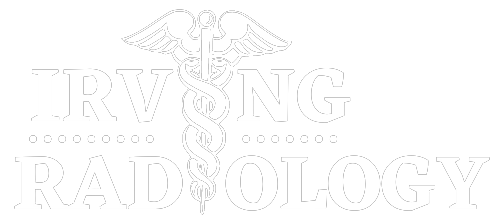Teleradiology has come a long way since its inception, with technical and communication advances paving the way for a new era of distant radiology services. The future of teleradiology is bright, with a number of intriguing advancements and technology poised to revolutionize radiologists’ operations and patient care.
This blog will look forward to the future of teleradiology and examine the trends and discoveries that are propelling this dynamic and evolving profession.
- Artificial Intelligence’s Rise in Teleradiology:
One of the most significant advancements in the field of teleradiology is the rise of artificial intelligence (AI) and machine learning. AI algorithms are being developed to analyze medical images and provide real-time diagnoses, allowing radiologists to work more efficiently and effectively. This technology is expected to play a significant role in the future of teleradiology, lowering workflow, improving accuracy, and, eventually, improving patient outcomes. - Teleradiology Improves Access:
Another key trend in the future of teleradiology is the emphasis on improving accessibility and ensuring that all patients, regardless of location, have access to high-quality radiology services. This is especially important in rural or remote areas where radiological services are few. Teleradiology allows radiologists to provide remote consultations and tests, bridging the access gap for patients in these places. - The Use of 3D Printing in Teleradiology:
3D printing is another exciting discovery that is predicted to have a significant impact on the future of teleradiology. By allowing radiologists to create detailed three-dimensional reproductions of medical images, 3D printing is helping to transform the practise of radiology. This technique is designed to improve patient outcomes by allowing radiologists to plan and perform surgeries with more precision and accuracy. - Improving Collaboration in Teleradiology:
The future of teleradiology is also predicted to be defined by growing collaboration among radiologists, healthcare providers, and patients. Through teleradiology, radiologists may easily share medical images and data with other healthcare practitioners, allowing them to cooperate to provide the best possible treatment to patients. This is designed to improve patient outcomes and ensure that everyone is on the same page about care plans and treatment options. - A Prospective Look at Teleradiology:
To summarize, the future of teleradiology seems bright, with a number of significant advancements and improvements on the way radiologists operate and care for patients. From the advancement of AI and machine learning to advancements in 3D printing and collaboration, the future of teleradiology is all about innovation, efficiency, and improved patient outcomes.
As the field of teleradiology changes, radiologists must stay up to date on the latest trends and advances in order to provide the best possible care to patients. Whether you are a radiologist or just interested in medical imaging, the future of teleradiology is an exciting and rapidly increasing area worth monitoring - The Impact of COVID-19 on Teleradiology:
The COVID-19 pandemic has had a huge impact on the healthcare profession, with teleradiology playing a critical role in reacting to this global health calamity. Teleradiology has become an increasingly important tool for radiologists and healthcare workers, with the growing need for remote healthcare services and the requirement for social distance. Teleradiology has helped to limit the spread of the virus and ensure that patients continue to receive the necessary therapy by providing remote tests and consultations. - Teleradiology’s Future Workforce:
Teleradiology’s future is also expected to have an impact on the workforce, with a rising number of radiologists working remotely and providing services from diverse locations. This trend is expected to continue as technology progresses and more healthcare practitioners employ teleradiology services. Radiologists must be prepared for these changes and have the requisite skills and expertise to work efficiently in a remote context. - The Importance of Cybersecurity in Teleradiology:
As more medical images and sensitive patient data are shared online, cybersecurity in teleradiology is becoming a rising issue. It is vital for radiologists and healthcare providers to preserve the security of their systems and processes, sensitive information from unauthorised access, and patient privacy. - The Benefits of Teleradiology for Patients and Healthcare Providers
In addition to the benefits listed above, teleradiology provides several benefits to both patients and healthcare practitioners. Teleradiology offers patients with convenient, accessible, and timely care, allowing them to acquire the necessary diagnoses and treatments quickly and efficiently. Teleradiology may assist healthcare providers save costs, speed up processes, and improve patient outcomes, making it an increasingly important tool for radiology’s future. - The Future of Teleradiology: An Exciting Time in Radiology:
To summarize, the future of teleradiology is an exciting time for the radiology profession, with a range of new technologies and advances poised to revolutionize how radiologists work and care for patients. Whether you are a professional radiologist or merely interested in medical imaging, the future of teleradiology is an exciting subject to follow, with many hopeful discoveries and advancements in the coming years.
Teleradiology has evolved into an important instrument in the healthcare industry, providing patients globally with rapid and easy diagnosis and treatments. With the increased need for remote healthcare services and the impact of COVID-19, teleradiology is expected to play a bigger role in radiology’s future. This is an exciting and rapidly growing sector due to technical advancements and the benefits of teleradiology for both patients and healthcare practitioners. As the future of teleradiology develops, radiologists and healthcare providers must remain informed of the developments and difficulties that lie ahead. Whether you are a radiologist, a healthcare practitioner, or simply interested in medical imaging, the future of teleradiology is an exciting subject to follow, with many new breakthroughs expected in the next few years.

